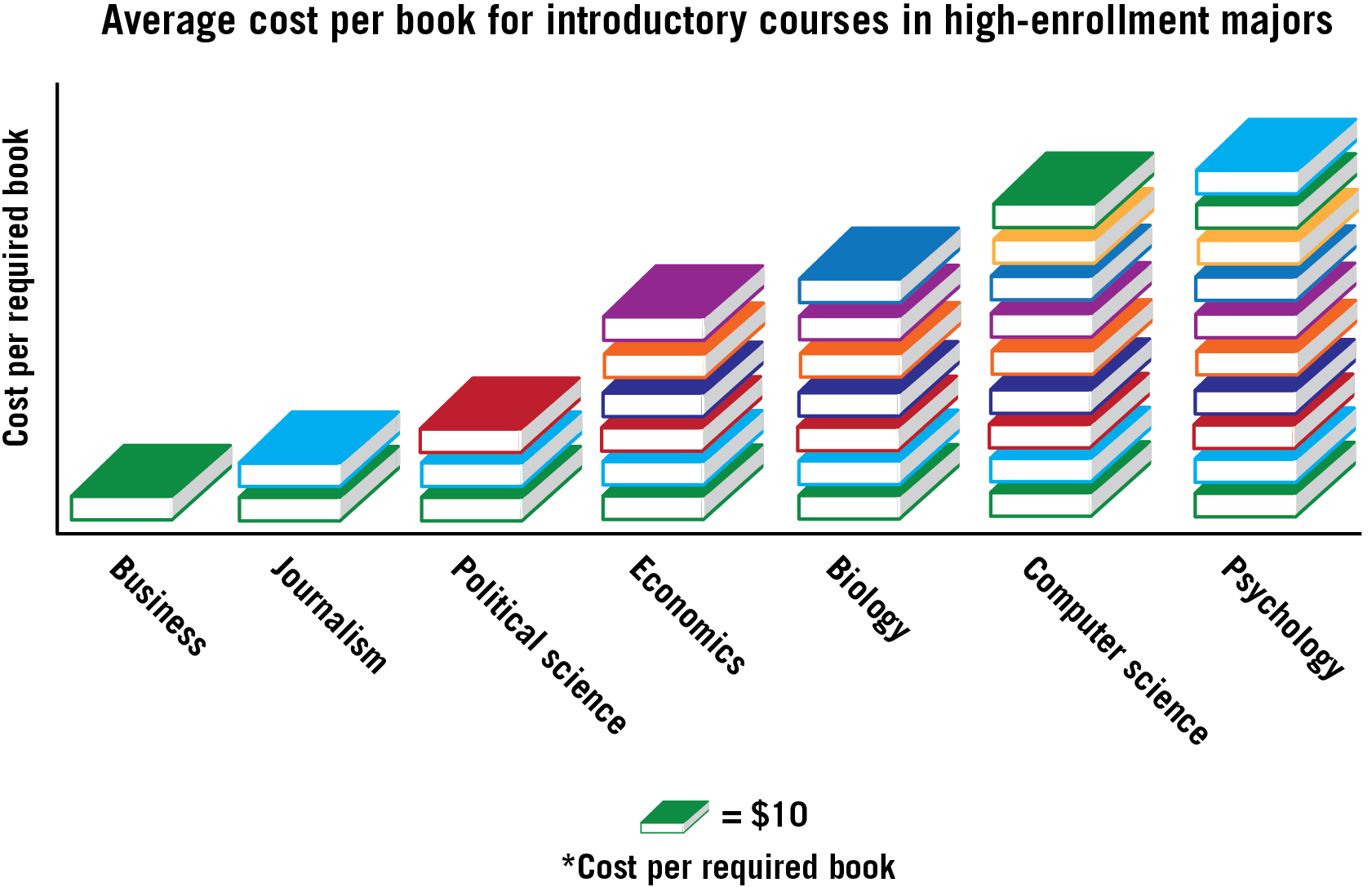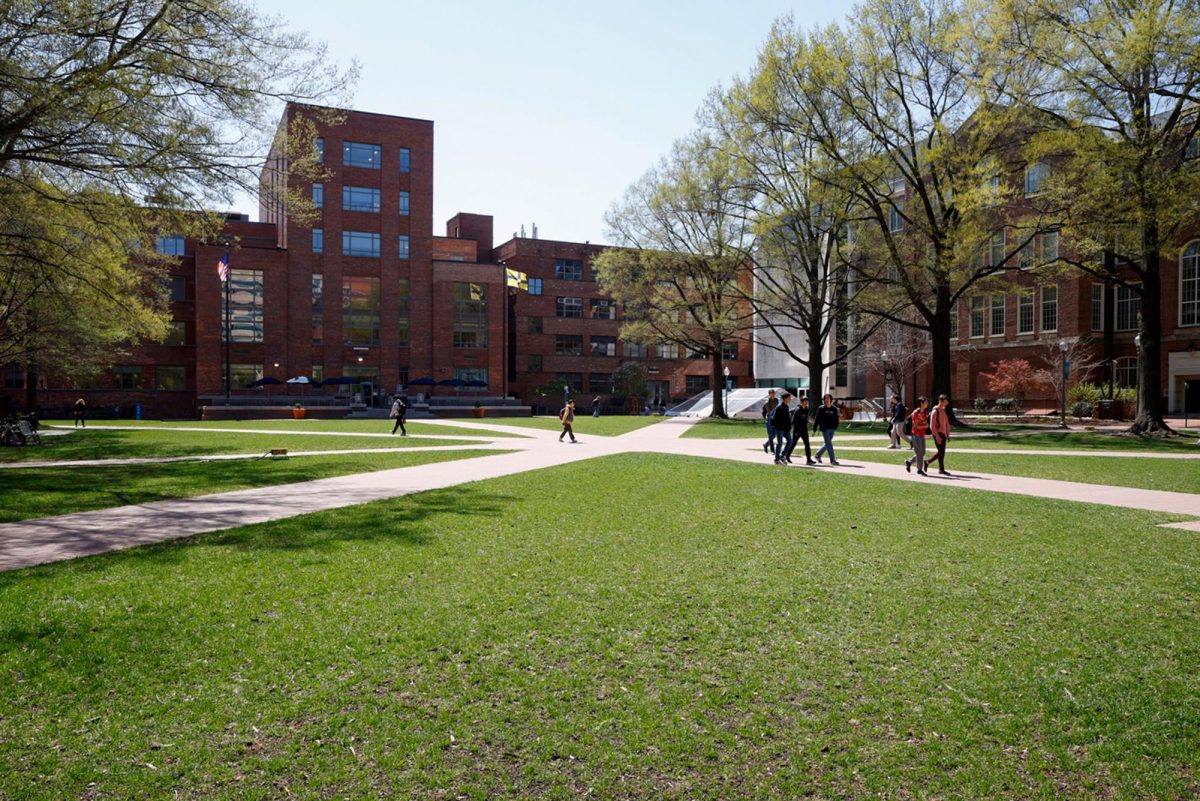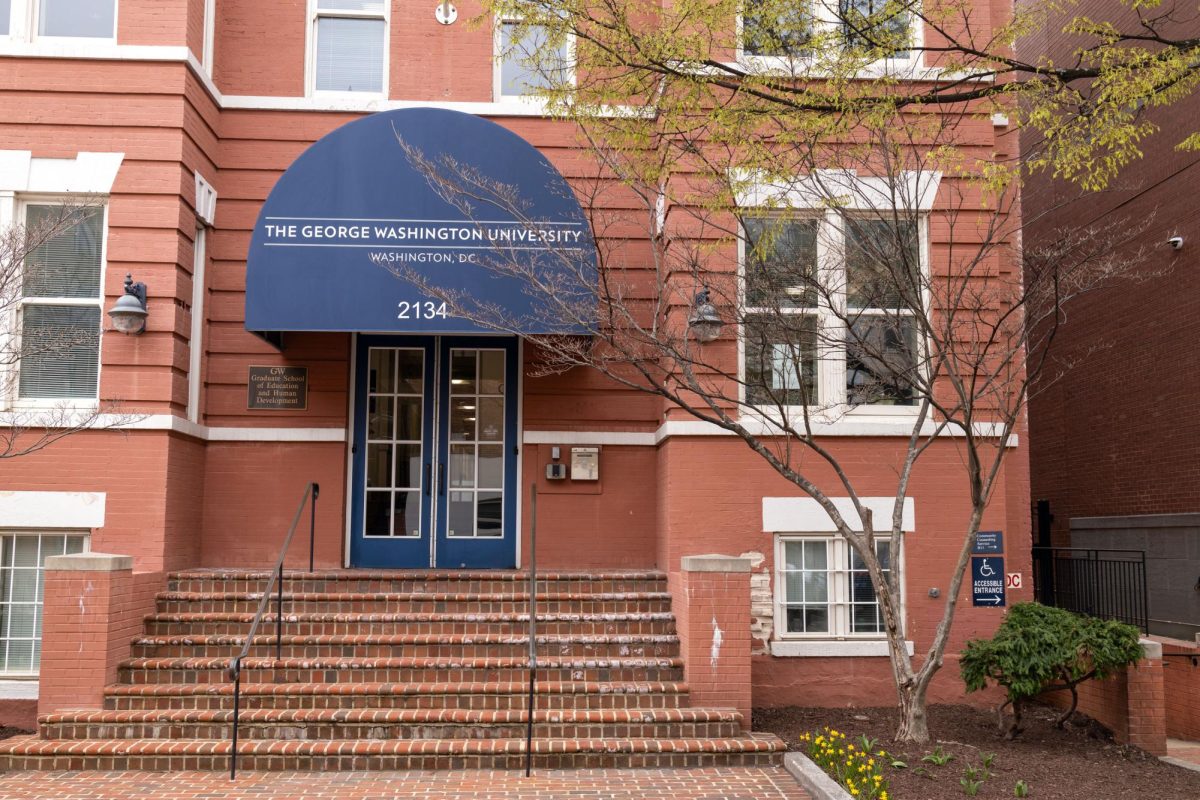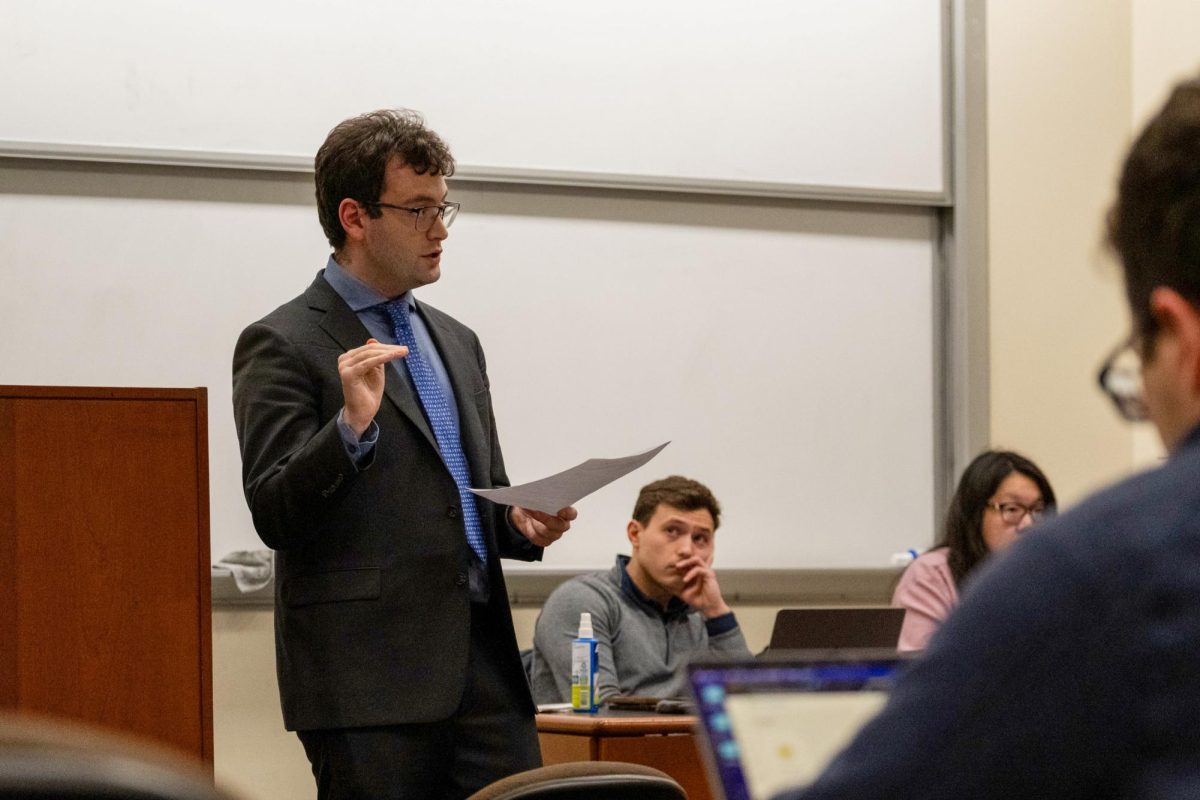Course materials required for introductory science classes cost about 85 percent more than those for introductory liberal arts classes, a Hatchet analysis found.
A review of the cost of required materials posted on the GW Bookstore website for 1000-level courses offered this semester found that students taking science, technology, engineering and math courses pay on average about $45 more for books than those taking non-STEM courses. Faculty said STEM courses rely more on textbooks sold by large companies that control their prices, while liberal arts courses can easily substitute less expensive materials.
Courses were selected for the analysis if they were listed under a department with at least 30 students enrolled in at least one of the department’s majors. The 133 books reviewed across 27 departments were materials sold by the GW Bookstore.
The analysis found that the costs of renting used books for introductory math courses like Single Variable Calculus I and II are among the highest of any subject, topping more than $140, while students taking liberal arts courses like Archaeology pay only $18.95 to buy their required book.

Alyssa Ilaria | Graphics Editor
For one section of Introduction to Comparative Politics, students can rent a used copy of their required book for about $45, while students taking a section of Contemporary Science for Non-Science Majors need to buy a new copy of the required textbook for $204.
The average cost to purchase a single book for an introductory STEM course was about $98 among 44 books reviewed, while the average cost of a single non-STEM book was about $53, the analysis found. Although the cost of required materials for STEM courses is relatively higher, students enrolled in the courses typically need about 1.3 books on average as opposed to about two books for students enrolled in non-STEM courses.
The average cost of renting a used book for an introductory course in American studies is $9.63, and no book costs more than $23. Students only have to rent or buy about two books per American studies class on average, according to the analysis.
Gayle Wald, the chair of the American studies department, said faculty in the department tend not to assign “big expensive books published by major textbook publishers” and focus on more affordable primary sources, like Martin Luther King Jr.’s “Why We Can’t Wait” for The Sixties in America course.
“My strong sense is that professors in American studies – and throughout GW, I hope – are attuned to the costs of the books we assigned,” she said.
Wald said professors should encourage students to take advantage of GW’s available resources, like GW Libraries’ Top Textbooks program, which allows students to borrow high-demand textbooks from the library for up to three hours.
She said faculty members in other departments, like those in STEM, may have more difficulty lowering costs for students than American studies faculty would because the prices of materials required for their courses are set by major textbook publishers like Scholastic and McGraw-Hill.
“I don’t think we’re better people than anyone else,” Wald said. “I think it’s just the nature of our discipline makes it easier for us not to rely on books that are priced the way textbooks are.”
For introductory history courses, the average cost of renting a book is $25.50, and no book costs more than $50 to rent.
Katrin Schultheiss, the chair of the history department, said history textbooks tend to be cheaper than STEM textbooks because history books contain mostly text rather than charts and illustrations that are more expensive to print. She added that history books are marketed to more than students alone, lowering the prices of the books.
“Many of the books that are assigned in history classes are not textbooks per se, but are books about history that may have a broader readership outside of the classroom,” she said in an email.
Schultheiss said textbook publishers keep costs high by issuing new editions that are “superficially different” from older ones to make it more difficult for students to resell their books.
“With history books, this tactic doesn’t really work because in many cases, it doesn’t matter if students are using different editions of the textbook because history books don’t include problem sets or exercises that really have to be identical for all students in a given STEM or economics class,” she said.
GW Bookstore sells multiple textbooks for introductory-level STEM courses for more than $100. The average cost of the cheapest available versions of introductory biological sciences course textbooks is about $65, and buying a new book for one section of Introductory Biology: Cells and Molecules, the only option available, costs $163.50.
For introductory physics courses, the average cost of the cheapest version of each book offered for each introductory class is $114.40, and for introductory speech, language and hearing sciences courses, the average cost of the cheapest option is $109.96. Several books for these subjects are not available to rent, and students must buy new versions of the books.
Student leaders have attempted to lower costs of required materials and find cheaper alternatives to textbooks in the past. The Student Association passed a resolution in 2017 to ask faculty members to consider lower-cost materials instead of more expensive textbooks, and some SA senators partnered with members of the Faculty Senate last semester to plan ways to cut the costs of required class materials.
SA Sen. Louie Kahn, CCAS-U and the chair of the academic affairs committee, said members of the SA want to expand the Top Textbooks program to include more courses and help students who struggle to afford “expensive” textbook fees.
Kahn said he wants the SA to pass a resolution this academic year to encourage professors to post their syllabi online earlier in advance of the first day of classes so students have time to look for more affordable alternatives to what GW Bookstore sells.
“If I was able to lower book prices for every student, I would,” Kahn said. “I just don’t have that power because it’s out of my hands, but these are the things that we can do to make it easier for GW students to get access to textbooks.”
Higher education experts said students are paying more for STEM books than liberal arts materials because a greater selection of alternative options exists for non-STEM students.
Jay Halfond, a professor of the practice in administrative sciences and educational leadership and policy studies at Boston University, said there is “no easy alternative” for the expensive materials STEM courses require, whereas humanities professors can “easily” assign older used materials that are cheaper.
He said university bookstores struggle financially as students are increasingly able to buy cheaper versions of texts from other sources. Book prices should be lowered if bookstores want to compete with companies like Amazon and Chegg, Halfond said.
“Textbook publishers and campus bookstores are in trouble these days and have yet to figure out how to monetize more reasonably priced alternatives,” he said.
Henry Levin, a professor of international and transcultural studies at Columbia University, said professors have increasingly substituted articles and other written materials for books in the past decade. He added that campus libraries have also stockpiled reserve copies of required materials for courses.
Levin said officials should give clear instructions to professors about which alternative texts they can substitute for textbooks to lessen the financial burden on students. He added that often there are only “nominal” differences between versions of books, and sometimes the most expensive version of a book is not necessary to meet a course’s objectives.
“The best solution is for instructors to be given guidelines and assistance in choosing among alternative texts,” Levin said.











